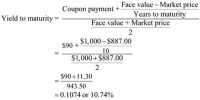Capital Budgeting may be defined as the decision making the process by which a firm evaluates the purchase of major fixed assets including – building, machinery and equipment. It is the process of planning expenditures on assets whose cash flows are expected to intend beyond one year. It is a step by step process that businesses use to determine the merits of an investment project. It is important because it creates accountability and measurability.
Techniques/method of capital budgeting: There are live key methods are used to rank project and to decide whether or not they should be accepted for inclusion in the capital budget.
(1) Pay Back Period: The payback period defined as the expected number of years required to recover the original investment.
(2) Discounted payback period: The discounted payback period is defined as the number of years required to recover the investment from discounted net cash flows.
(3) NPV: A method of ranking investment proposal using the NPV which is equal to the present value of future net cash flows discounted at the cost of capital.
(4) IRR: The IRR is defined as that discount rate that equates the present value of a project expected cash inflows with its initial cost or the present value of the outflows.
(5) MIRR: The discount rate at which the present value of a project’s cost is equal to the present value of its terminal value, where the terminal value as the sum of the future values of the cash inflows compounded at the firm’s cost of capital.
Furthermore, if a business has no way of measuring the effectiveness of its investment decisions, chances are that the business will have little chance of surviving in the competitive marketplace.















